By the nature of the products obtained, chickens of meat, egg, and meat-meat lines are distinguished.
Poultry farmers in private farmsteads prefer beef breeds of chickens, because they are extremely profitable.
Table of contents
Meet: chicken master gray
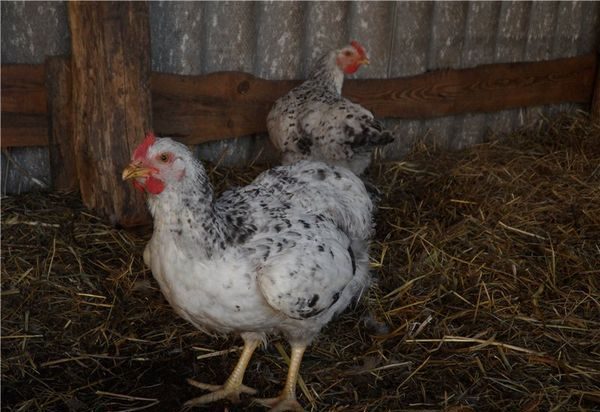 In modern farmers, the interest is of cross master gray (Master Gray), another name is Master Gris.
In modern farmers, the interest is of cross master gray (Master Gray), another name is Master Gris.
Chickens master gray obtained by French breeders of the company Hubbard for home farms. There are varieties bred by specialists of the same company: Master Gray M and Master Gray S.
What does this breed look like - photo and description
A large white-gray bird with a bright red beard and scallop, the overall size of other crosses. It is distinguished by its high growth, long body, wide back, strong, medium length legs.
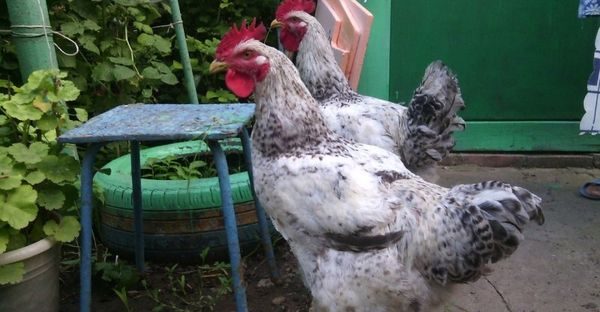 Gray feathers interspersed in white throughout the plumage. Gray color predominates over white in the neck, at the end of the wings and in the tail.
Gray feathers interspersed in white throughout the plumage. Gray color predominates over white in the neck, at the end of the wings and in the tail.
Hens content
Chickens master grizza calm, sociable, hardy, do not require special care, additives to the main feed.
Non-aggressive nature allows you to take the bird in hand. This property makes it possible content of hens instead of domestic adoptive mice. Heavy dual-purpose cross is good in the cage, indoors with access to open space.
In industrial farms chickens are kept in spacious poultry houses (in cages or on the floor).
The content of the hybrid in the cell
The advantages of growing poultry master grizzles in a private cage are obvious:
- Chicken is located in a restricted area, so the owner’s access to it is free, but for predators, chicken lovers, no.
- A place for movement is small, vital forces are spent on weight gain, egg production.
- No opportunity get on a neighbor's plot and cause controversy.
- Meat is twice as largethan from floor-laying chickens.
Master gray in a home hen house
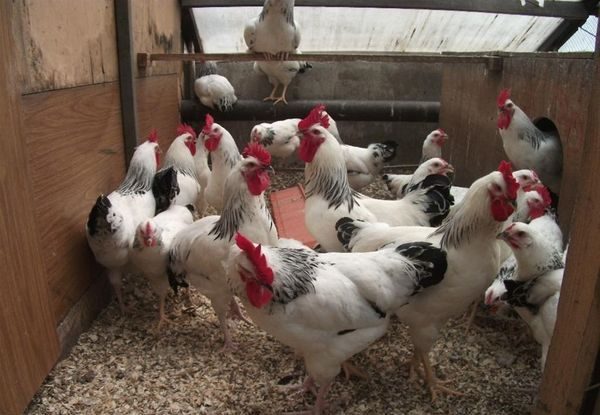 An alternative to the existence of a bird in a cage is to stay indoors with the possibility of walking.
An alternative to the existence of a bird in a cage is to stay indoors with the possibility of walking.
The appeal of this method is as follows:
- In the chicken coop moves on the floor in any direction.
- There is a possibility communicate with individuals of their own and the opposite sex.
- At will bird moves freely in place of walking. Well, if this area with grass vegetation, sandy soil, small pebbles.
- Balanced character allows you to walk bird on the ground without a high fence, just in the yard of a private house.
Positive characteristics of the cross
Before buying a cross master gray, you need to collect information about the characteristics of the chickens, read the description and requirements for its content.
Why is it worth growing this breed?
- master gray - heavyweights. Adult chicks gain weight up to 4 kg, roosters - more than 6 kg. Growth rate is average. Compared to broilers, crosses are harder, gaining weight faster.
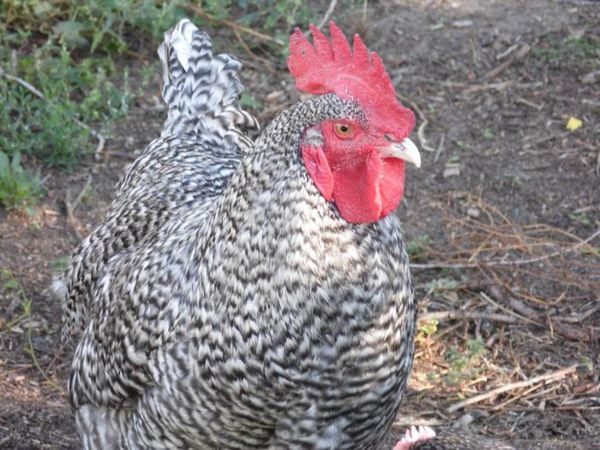
- Dietary meatbecause it contains a lot of high-grade proteins and low fat. Possesses excellent taste qualities: dense, but juicy, tender, tasty.
- Chickens are different high egg production. According to various sources, eggs start to begin at 4-6 months and give 200-300 pieces per year. Egg weight - 65-90 grams. Cream shell, brown.
Deficiencies in breeding chicken
master gray prolific hens and good hens. But often the chickens hatched in the private farmstead, are the descendants of chickens used in the process of breeding a hybrid.
From chicken to hen
 Cross nestlings are hardy, resistant to weather variations.
Cross nestlings are hardy, resistant to weather variations.
- Subject to established rules for keeping poultry, a balanced diet and a sufficient amount of feed no more than 2% of chickens die.
- Growing rapidly, gaining weight quickly. If a monthly chicken weighs 1 kilogram, then at 3 months - more than 2, 5 kilograms. The increase in the weight of the carcass occurs without any chemical enhancers.
Care breed cross master gray
When growing domestic chickens, hybrids and crosses will be healthy, subject to certain conditions of their detention.
- Cage Coop must be warmclean, dry, bright in summer and winter. The height of the coop is not less than 1, 8 meters. In the chicken coop equipped perches.

- Need constant ventilation house through the window, leaving (preferably) on the south side.
- Draft contraindicated.
- For every 10 m2 premises - no more 20 crosses.
- In the winter season it is recommended to pave the floor dry grass, sawdust, chopped straw. Chickens love to peck dry blades of grass, especially nettle. This is a source of vitamins.
- Nees are required need nestsequipped in wooden boxes.
- The size of the nests depends on the size of the largest chicken. Recommended sizes: width - 35 cm, length - 40 cm. Nests can be installed on the floor, hung from the wall, while equipping the approaches in the form of ladders. Spread straw, hay.
- Nesting sites located away from the space of active mass movement of chickens.
- Chickens in the incubation stage are isolated. After the appearance chicks contain separate from the adult bird until the chicks grow up.
Disinfection as disease prevention
It is carried out in this way:
- Inventory handled 3-5% hot soda ash solution.
- Ceiling, floor, walls disinfected one of the chemical solutions:
- 3-5% creolin or xylonaph;
- 2% caustic soda;
- 3% formalin.
- Important to whiten 20% mortar wall and ceiling. To maintain the disinfection mode for 12 hours, ventilate thoroughly.
- In the house or in the pasture put the sand and ash for "bathing" chickens. The procedure is necessary for the prevention and control of skin parasites.
Chickens and adult bird feed
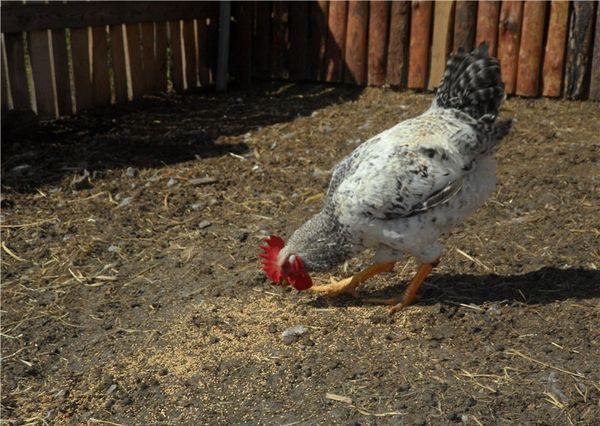 To feed the bird master griz need for age, fully. Then the chickens will be healthy, grow quickly and run on time. One adult chicken per day - approximately 120 g of feed, water - 250 ml.
To feed the bird master griz need for age, fully. Then the chickens will be healthy, grow quickly and run on time. One adult chicken per day - approximately 120 g of feed, water - 250 ml.
Feeding conditions
- Classical feeding product - ready feed, which included all the necessary components of good nutrition.
- Helpful include in the diet wheat, corn, oilcake, beets, carrots, grass, bone meal, fish.
- For the fortress Egg shells need to make mineral supplements: chalk, crushed egg shells, crushed limestone and shell rock. Provide constant access to them.
Natural supplements stimulate the gastrointestinal tract, increase egg production, improve taste and external characteristics of products.
Using top dressing reduces the amount of main feed. Keeping chickens becomes less expensive.
Rearing Chicks: Feeding Tips
- Just hatched chicks the owners of private farmsteads first feed on chopped boiled egg and green onions.
- Then sprinkle millet, they introduce fresh cottage cheese, crumbly buckwheat porridge, and a wet mash of crushed grain.
- Gradually produce cereals larger, go to the adult bird menu.
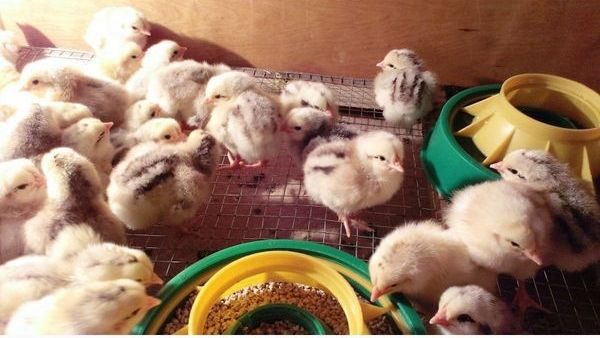 Young animals are fed with such feed:
Young animals are fed with such feed:
- From birth to two months - Pc -2.
- From the eighth to the twentieth week - PC -4.
Important! It is necessary to feed chickens of this breed at least twice a day, young animals more often. At night, they give not wet food, but grain.
Must be clean water to drink.
Diseases of chickens, treatment
Viruses, microbes, parasites cause infectious and non-infectious, but infectious diseases of chickens. Poultry farmers should know the common symptoms of the disease.
If the bird is lethargic, bald, bored, or even behaves strangely, it is necessary to take action. To conduct an external examination of the carcass, scallop, beard, feathers, legs. The cause of the disease can be parasites.
Red chicken mite
This is a blood-sucking parasite that digs into the skin of a bird.
Signs of having a tick:
- Chickens eat more, than usual.
- Is falling egg production.
- Slows down growth chicks.
- Pale earrings and ridges.
The parasite is a carrier of infectious diseases.
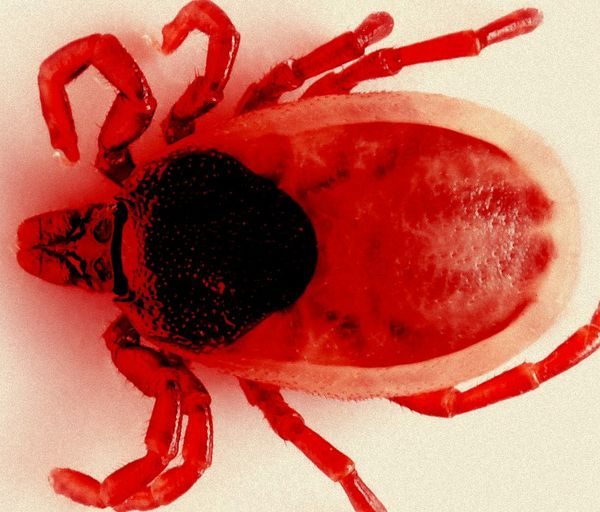 Tick elimination measures:
Tick elimination measures:
- thorough disinfection rooms, nests, containers, etc.
- replacement litter
- skin treatment birds buttered.
Seek medical attention from a veterinarian.
Feather Chicken Mites
Settled on the stem of the pen and in the hole. They feed on blood. The feather collapses, the bird becomes bare.
There is no positive result in the fight against feather mites, according to some information.
Acariform parasites
Knemidokoptoz, or "limy foot", is caused by ticks that live on the legs of the bird, often a male individual.
Leg modifications:
- stratum corneum thickens,
- appears on the phalanges gray bloom,
- goes intense leg deformity.
Treatment: treat with birch tar, repeat after 6 days. Acaricidal medication will do.
Analogs of meat and egg crosses
Pharma color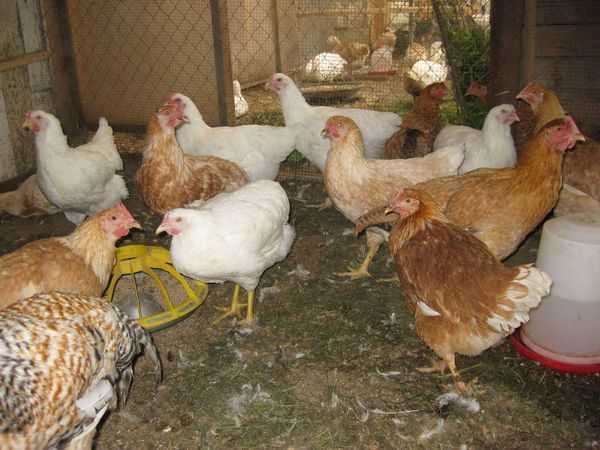
- plumage - color,
- egg - cream,
- chickens weight - 3.5-4.5 kg,
- egg production-250 pieces a year
- weight eggs-60 g
Tetra-N
- plumage - brown,
- egg - raspberry,
- bird weight - 2.8-4.5 kg,
- egg production-250 pieces per year
- weight eggs-62 g
Redbro (Redbro)
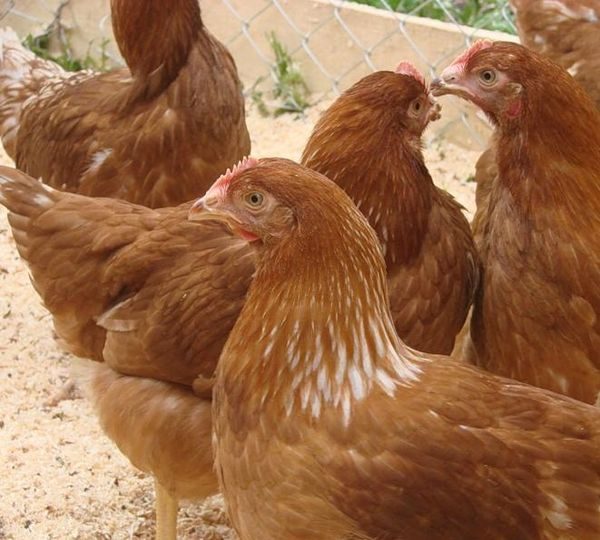
- u redbro legs longer than the master grizzles,
- egg production - up to 300 eggs per year,
- egg weight - 65 - 90 grams,
- roosters weight in half a year - up to 7 kg,
- egg-laying - in 4 months.
Reviews from forums and videos about the breed
Master Gray - my favorite chickens! They look beautiful, they gain excellent weight, they also have very good egg production (up to 300 pieces / year), they are unpretentious and frost-resistant. Great taste of meat, derived from the French gourmets.
They are distinguished by the amount of meat and high egg production. Up to 300 eggs per year, when the usual give 180 - 200 pieces. Yes, and a large area of curly does not ask, so grow them is a pleasure. Only positive reviews!
Chicken master Gray will appreciate the excellent characteristics, conditions of detention, the aesthetic appearance of the most demanding poultry farmers.
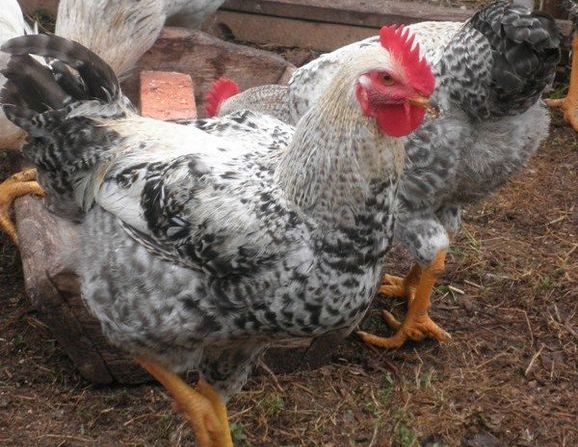
I read the article with interest. Our mother is going to live in the country and raise chickens. I understood everything with rocks, but there are questions. Does breed choice depend on climate and place of residence? Is it possible to choose a breed in order to buy pullets in the spring, and make slaughter in late autumn?